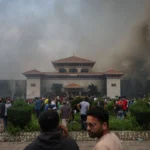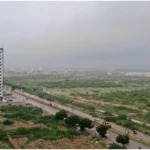On February 8, 2024, Pakistan held one of the most keenly watched National Assembly elections in its history, the largest and most expensive to date.
The country’s 12th general election was fraught with controversy from the start. The suspension of cellular and internet services on election day, followed by the slow revelation of unofficial results, has prompted far too many questions, the solutions to which, while clear to some, are being discussed virtually every quarter.
With the unofficial tallies virtually complete, one remarkable feature stands out: a glaring disparity in vote margins between constituencies, with one candidate handily defeating a strong opponent by 183,359 votes and another losing by a razor-thin margin of 293 votes
While numerous political groups, including Pakistan Tehreek-e-Insaf (PTI), Jamaat-e-Islami (JI), and Jamiat Ulema-e-Islam (JUI-F), have widely condemned the results, the other parties have not raised many complaints because they are on track to form the government.
According to the unofficial election results, PTI-backed independent candidate Muhammad Jamal Ahsan Khan won from NA-89 Mianwali 2 with 217,427 votes, while the runner-up, Obaid Ullah Khan of the Pakistan Muslim League-Nawaz (PML-N), received 34,068 votes, an 183,359-vote margin.
Malik Asad Sikander of the Pakistan Peoples Party (PPP) won NA-226 Jamshoro with 165,044 votes, while Syed Muneer Haider of the Grand Democratic Alliance (GDA) lagged with 30,876 votes, a 134,168-vote deficit.
In NA-213 Umerkot, PPP’s Nawab Yousaf Talpur received 175,162 votes, while PML-N’s Mir Amanullah Khan Talpur received 44,847, trailing by 130,315.
Unofficial NA-90 Mianwali 2 results show that PTI-backed Umair Khan Niazi received 179,820 votes, while the PML-N’s runner-up, Muhammad Humair Khan Niazi, received only 51,223, representing a 128,597-vote deficit.
PPP’s Syed Ayaz Ali Shah Sheerazi won NA-224 Sujawal with 134,006 votes, while JUI-F’s Molvi Muhammad Saleh Alhadad received 15,314 votes, a 118,692-vote margin.
.







